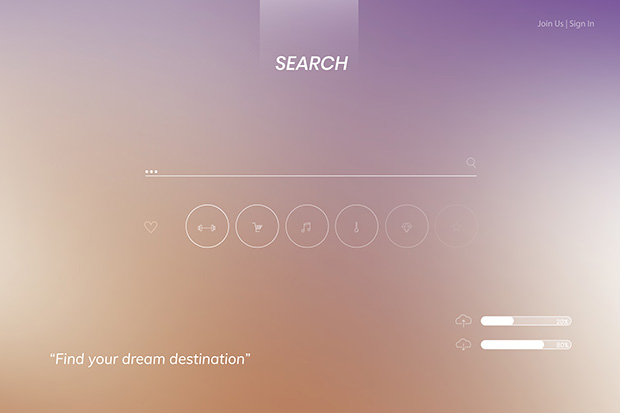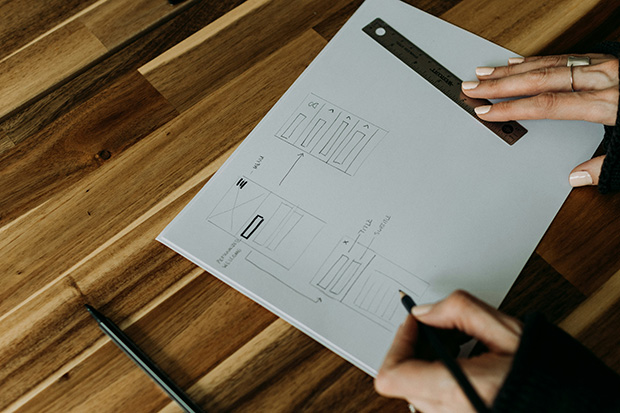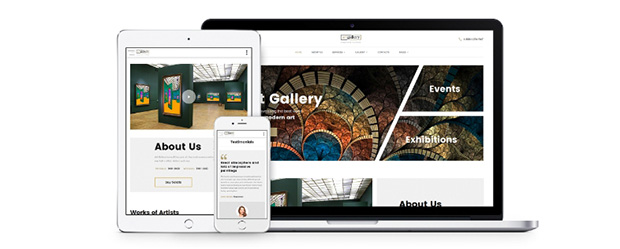Streamlining the Path: How Minimalist Web Design Elevates User Experience in 2024
It is a fact that we are living in a saturated and overloaded age. Today, more than ever before, we can see that attention spans are dwindling, so more and more users crave clarity and a touch of minimalism.
This is a very common issue of the digital age, so we can safely say that implementing minimalist web design presents a compelling opportunity nowadays. This minimalist philosophy isn't hard to find.
Just start prioritizing minimal web design elements and remove clutter for an improved user experience. As simple as that! Keep reading because we will take a deep look at minimalism.
Also, we will explore what the secret of a synergistic relationship between minimalism and UX is. Stick to the end because we will explore why embracing this approach is crucial in 2024.
The Ultimate Power of Less: Minimalism and UX
The term minimalism is often misunderstood, so it's important to learn that minimalism isn't just an aesthetic trend. We can say that minimalism represents a strategic approach that is more focused on user behavior than on visual experience.
At the core of minimalism lies moving away from common visual noise and putting important functionalities first. The minimal web design also has the following UX benefits:
- Enhanced Focus: Keep in mind that when it comes to building a website, everything is connected one way or another. You can't have great user engagement with a website that is too noisy. This implies eliminating distractions and simply directing user attention towards the most important content. If you're wondering why, this is the answer: fewer elements mean less mental processing. This is super important for cognitive focus because you are allowing users to grasp information slowly with more understanding. This will lead to more complete CTA tasks as well as more efficiency.
- Optimized Scannability: You've probably heard of intuitive web design. When it comes to websites we build today, intuitive design is more important than ever. If you want the user to explore your website intuitively, focusing on key elements and CTA, you will need to clean website layouts. When you have a clean web design, you will naturally guide users' eyes with less effort, easily facilitating content.
- Faster Loading Times: In the dynamic age we live in today, the speed of the page is almost crucial. It takes a lot of patience for the average user to wait for the slow page to load, so if you want to be in line with today's standards, take page loading seriously. Fast page loading is connected to uncluttered web design. In other words, streamlined designs with minimal graphics will achieve faster loading speed. It's important to mention that page loading speed is also crucial for SEO and ultimate user satisfaction in today's fast-paced web environment.
- Accessibility: A clean web design is easier for users to access, so keep that in mind when you intend to design a webpage. Minimalism increases accessibility to the max, so gives an advantage to simple layouts, clear typography, and high-contrast color palettes for ultimate minimalistic effects.
Designing a website in a minimalistic style can lead to a better user experience. By incorporating minimalistic design principles, website owners can boost user engagement, improve conversion rates, and ultimately achieve their business goals.

Practical Strategies for UX Minimalis
As we move into 2024, businesses and designers must embrace minimalism to improve the user experience and stay competitive in the fast-paced digital age. When it comes to uncluttered web design, partnering with a reputable Webflow SEO agency can further enhance your website's performance and visibility in 2024.
Going further, practical strategies for implementing minimalism in UX have a bunch of possibilities for building even no-code solutions.
The ease of building powerful websites empowers UX designers to focus on website functionalities while embracing minimalism effectively.
Here are some key strategies UX designers should consider when it comes to implementing minimalism:
Embracing Whitespace:
The power of whitespace is often forgotten. If you want to take the best of the minimalist trend, use the power of white space. One of the best ways to do it is to utilize ample whitespace (negative space) between elements.
This will create a visual breathing room and guide user flow better. The days of the successive elements in oversaturated spaces are gone for good.
Choose High-Quality Visuals:
Focus on quality, not quantity. This implies avoiding too many visuals that have no connection with your brand guide. Instead, use a few impactful images or videos that are perfectly aligned with your brand and message. The use of high-contrast minimalist website layouts can do wonders for the way the page works.
Focus on Typography:
Typography plays a crucial role when it comes to achieving the minimalistic effect. You can implement high-contrast and readable fonts that have a clean, modern, and minimalistic look. Choosing the right typography will help you guide users' eyes through the content hierarchy. A streamlined content-focused web design goes further than just the quality of writing. The right typography and the proper use of whitespace also make a world of difference.
Simplify Navigation:
You can make navigation minimalistic, too. Try to opt for clear, intuitive navigation structures, such as hamburger menus or single-page layouts. With minimal navigation and interface web design, you will ensure that users can find what they need on your website quickly.
Prioritize Interaction Design:
Minimalism doesn’t mean you can’t uplevel your website with animation. You can leverage subtle animations and micro-interactions to add personality and enhance user engagement. This will make your website interactive without compromising its clarity.
Optimize for Mobile Users:
In 2024, it’s more important than ever to prioritize responsive web design. UX designers need to ensure a minimalist aesthetic that will translate seamlessly across all devices, particularly mobile.
In the age where most users come from smartphones, it’s essential to keep user experience optimized for mobile users as well.
Minimalistic practices that are suitable for UX design are just a starting point. You can modify them additionally for your needs for the best possible results.
Why pick ultra-clean and simple web design in 2024:
Even though minimalist design always looks good when it comes to web design trends for 2024, other trends make minimalism particularly relevant in the 2024 simplistic web design landscape:
- The rise of mobile users: optimized design has never been more important. With more than 60% of users coming from mobile devices, the focus of minimalist design on responsive layouts and optimized loading times is becoming a must.
- SEO landscape: Simpler is much better when it comes to SEO. In 2024, Google will place a huge emphasis on page speed and usability in search results - both areas where minimalism excels. The minimalistic design will be a major part of B2B businesses wanting SEO.
- Accessibility requirements: The growing understanding of the different needs of users means that minimalist design needs to focus on a clear hierarchy. In addition, intuitive navigation is more valuable if you want to appeal to a wider audience.
- Attention economy: In a world flooded with content, minimalism's ability to capture and hold users' attention is crucial.
Remembering all of these factors will aid you in making an informed decision and taking into account a simple and clean design.
In Summary
To summarize, minimalist web design is not just another trendy aesthetic approach that will soon become "old news." Minimalistic web design should be considered a wise strategic approach that has focus.
Furthermore, minimalist design puts user behavior and user experience at the forefront. By simplifying the website layout, focusing on the essentials, and reducing visual noise, websites can provide a better focus.
This improvement leads to optimized scannability, faster loading times, and better accessibility.
By using white space, high-quality images, legible typography, simplified navigation, and interaction design, UX designers can create powerful, effective, and minimalist websites that are accessible, intuitive, and engaging.
Copyright © . All Rights Reserved

